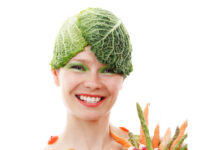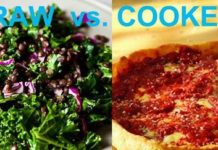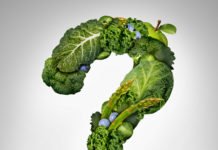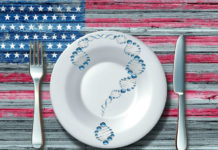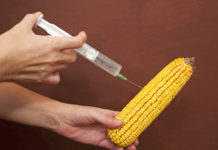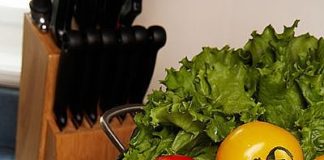Raw Food Basics: Getting Started with a Raw Food Lifestyle

A raw food diet is based on eating live, uncooked and unprocessed foods as a large percentage of your diet. When 75-100% of your total food consumption is raw food, you are a raw foodist. At that rate it is believed that your body’s elimination system can eliminate all or most of the toxins in the cooked portion of your diet. When you eat more cooked food, the body can’t eliminate all the toxins and they back up causing dis-ease. Heating food above 118°F. is believed to destroy enzymes in food that can assist in digestion. Cooking also diminishes the nutritional value of food — the heat actually causing chemical changes in the food creating many of the carcinogens, mutagens, free-radicals and other toxins that are associated with many of today’s diseases, from diabetes and arthritis to heart disease and cancer.
In addition to all that, there is a lot of emphasis among raw foodists on the pH of food. It is believed that a mostly raw food diet is “alkaline forming,” while cooked and processed foods are “acid forming.” All medical resources agree that the pH balance of our blood is one of the most important biochemical balances in human body chemistry. pH stands for “potential hydrogen,” and refers to the number of hydrogen ions in a substance like your blood. Higher numbers mean a substance is more alkaline (absorbs more hydrogen ions). Lower number means a substance is more acidic (less potential for absorbing hydrogen). Human blood is usually around 7.35 to 7.45 – just above neutral or slightly alkaline.
Raw foodists believe that the pH level of our bodies is directly influenced by what we eat and drink. So foods that tend to help maintain a more alkaline body chemistry are called “alkaline forming,” and visa versa. If you remember your basic chemistry, you know the chemical processes for an acid are very different than those for a “base” (another word for alkaline). Most chemical processes in a healthy body are alkaline based, so healthy people seem to be more “alkaline.” On the other hand, a more “acidic” lifestyle based on cooked and processed foods is believed to cause dis-ease. You can also alkalize your body by making sure all the water you drink is not only clean, but high in pH and negative ORP. I use a water ionizer for this myself, but there are a couple of good brands of bottled water with pH above 8 (such as Fiji water). These days with so much talk about pH some companies are starting to list the pH of their water right on the bottle!
Raw foodists are usually vegan, meaning they do not eat animal-based products like dairy or meat. Only raw plant foods are generally eaten, including vegetables and fruits, plus soaked and sprouted grains, nuts and seeds. A small group raw foodists, part of the Natural Hygiene Movement, include raw, organic animal products, such as free range organic chicken, sashimi (raw fish), meat (carpaccio), organic eggs, organic yogurt or raw organic goats milk cheese. My personal preference is a raw vegan lifestyle.
Raw foodists in general all agree that consumption of uncooked foods encourages weight loss and prevents and/or heals many forms of chronic dis-ease. In my own case I lost a ton of weight and pretty much handled a serious case of chronic fatigue syndrome. Many medical studies have shown other positive health outcomes with such diets, though when not done properly it can also lead to some problems. When I was teaching at a major raw food health institute for several years, I personally saw thousands of people with various illnesses have “spontaneous remissions.” Of course, results vary with the individual and many other conditions.
Raw Food Basics — Getting Started
A common myth is that eating raw takes a lot of time to prepare. Nothing could be further from the truth! I am one of busiest people I know (mostly answering emails from my readers)! But when you do it correctly, a raw food diet is actually one of the easiest, most convenient ways you can eat. Just use the Raw Food Basics on this web site to get started. Once you learn the basics learn to keep it simple! My rule of thumb for eating 75% raw is this easy:
There are 4 meals in an average day for most people (lunch, breakfast, dinner and your combined snacks). So to be 75% raw you need to have any 3 of those be mostly raw, and add a good salad to whatever you are having for dinner (remember, whenever I talk about raw food I mean ONLY organic food). Here is how I do that myself.
First, I have a raw, tasty smoothie every morning for breakfast instead of my old favorite – a toasted bagel with cream cheese and coffee. What you have for breakfast determines the rest of your day so make sure you start out with healthy, energy-packed, nutrition-packed foods rather than toxins like wheat and caffeine! Yes, the gluten and some of the other heat-created chemicals in cooked wheat products are toxic! So try to eliminate all wheat and caffeine from your diet entirely!
For lunch I have a fresh live salad or fresh green juice almost every day. I keep a Samson Juicer right in my office and stock my little office fridge with cucumbers, celery, spinach and carrots. At home I have a Green Power juicer. Why two juicers – so I don’t have any excuses to miss my juice – and because I love to juice! Remember, never stuff yourself and only eat when you are really hungry.
For dinner I have whatever I like, plus a good sized raw salad. I am actually around 90% or more raw, so you may occasionally find some cooked items on my plate around dinner time, but even then I stay vegan. And I always avoid sugar (or anything made with sugary ingredients, especially corn-based ingredients like corn syrup), wheat products (or anything that has “gluten” in it), anything “hydrogenated,” and finally salt (or anything salty including MSG).
Finally, there are snacks – what I call the 4th meal. I usually keep fruit, nuts and flax seed crackers at my office. But when I don’t have time for all that I always have organic apples handy. I always soak my nuts to activate the dormant enzymes in them and reduce the dense proteins and fats so they are more easily digestible. I soak almonds overnight, for example, then after rinsing I sprinkle them with some spices. Lately I like Pink Himalayan Mineral Salt. Then I stick them in my Sedona Dehydrator to dry them out for snacking. I also use some of the soaked nuts wet to make nut milk for my smoothies.
What You Need for the Raw Food Basics
Most raw recipe books focus on fancier dishes, which can be fun sometimes. However, I prefer to keep it simple — the raw food basics!. Raw food doesn’t have to be complicated or expensive! In fact, I find it is cheaper to eat raw organic foods since they are more nutritious so I actually eat less!
While it’s by no means essential to own fancy kitchen appliances it really does help to own at least a good quality 3 HP blender like the Blendtec Blender and a low-speed masticating juicer like a Samson Juicer or the GreenStar Elite Juicer. But if you are on a budget, then all you need really is a good sharp knife! However with these tools you’ll discover lots of new, exciting and healthy recipes!
As for foods, I find that I can get most of what I need in the organic food section of my local supermarket. I also go to my local organic green markets on weekends to find locally grown and better quality produce. You can also use an organic produce delivery service if one is available in your area or subscribe to a local CSA farm (Google “community supported agriculture”). Remember, always get organic produce! In addition to the pesticides on commercial produce, commercial produce can have huge health risks from genetically modified organisms (GMOs). Most importantly, organic food is usually 80% to 300% more nutritionally dense (click for article on Organic Food)! As your body learns to absorb this additional nutrition, you be less hungry and actually eat much less, reducing your food costs well below what is was when you were eating empty calories filled with toxins that increase your health care costs.
Enjoy!
You are entering on a wonderful journey – so please take the time to educate yourself about the raw food basics — so you know what you are doing and fully enjoy it! It really is a wonderful new life, but doing it properly takes time to learn, and give yourself time to let go of old habits and food addictions. Finally, be compassionate with yourself. If you find yourself feeling weak or a little flu-like, you may be detoxing, which is normal. You can slow down until you adapt more or take the time to learn more about cleansing to actually speed up the process. Feel free to contact me if you have any questions!
|
Raw food eventually helped me lose 75 lbs almost as an after-thought! Over 170 delicious recipes show you how and make going raw easier than ever … without sacrificing taste. 104 pp. Special sections: Recipes for the Holidays & Raw Food for Pets. |
See how easy raw food can be with this easy, tasty recipe.
Cabbage Roll-Ups
- 1 large cabbage leaf
- 1/2 avocado, cut in chunks
- 2 olives
- chopped Lentil, pea and/or fenugreek sprouts
- Lemon juice
- Liquid Aminos
- Dulse flakes
- Slivered red pepper
- Sprouts
A cabbage leaf makes a great sandwich for any filling. Softening the cabbage makes it easier to roll the filling up in it. Any guacamole, pate or salad recipe would be delicious stuffed in a cabbage or lettuce roll.
Soften the cabbage leaf by putting it in a dehydrator for 10 minutes or dipping the whole leaf in hot water until soft; set aside. In a small bowl, mash the avocado with a fork and add the olives, sprouts, lemon juice, Liquid Aminos and dulse to taste.
Place the mixture on the cabbage leaf. Top with red peppers, sprouts and any other vegetables you have on hand; roll up and enjoy.
Also Read:
https://rawfoodlife.com/philosophy-of-raw-whole-food/


